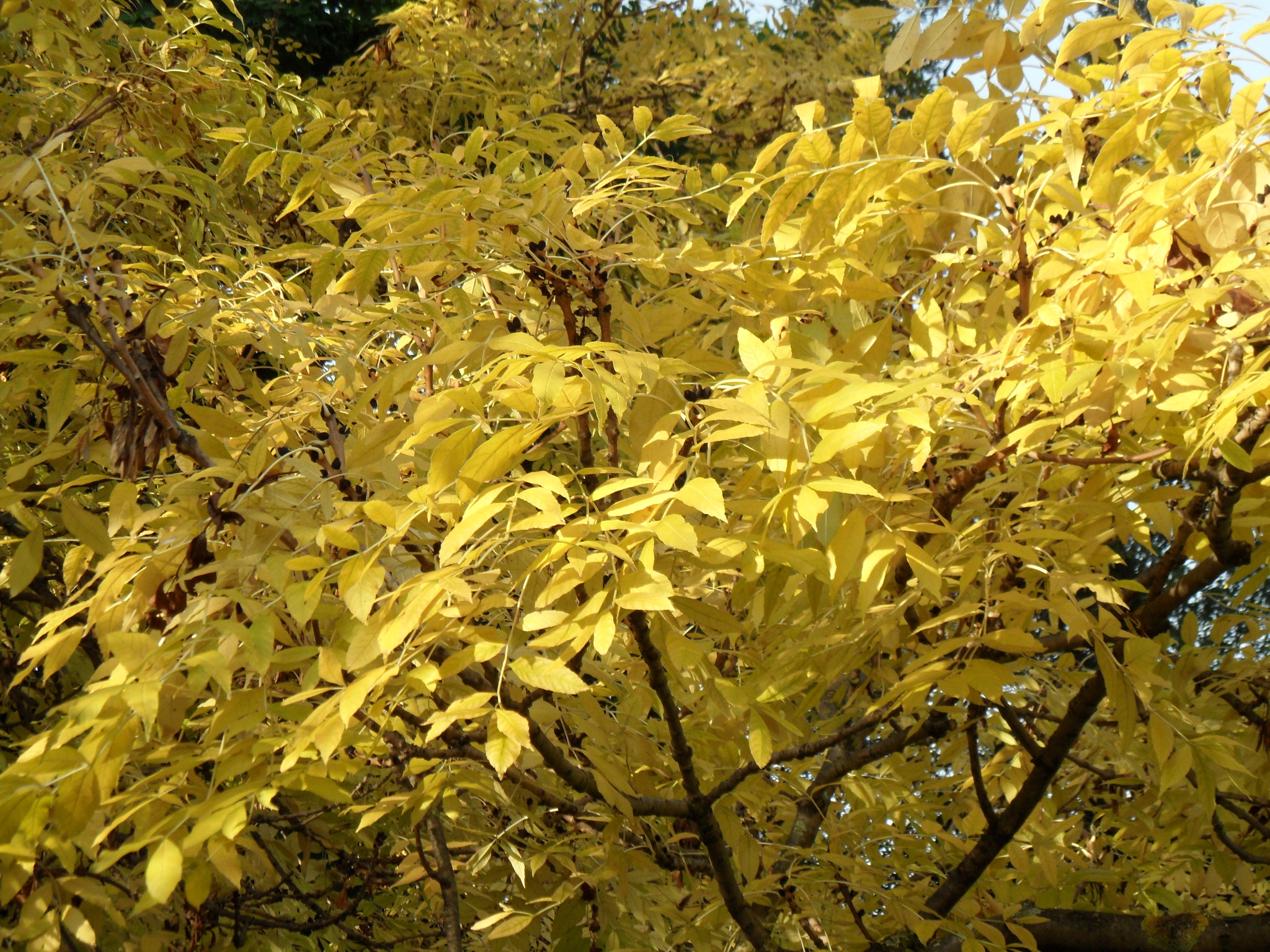
Tree 20-30 m or more tall, habit variable. Bark smooth at first, yellow-brown, becoming fissured. Winter buds black. Young shoots pale yellow-brown. Leaves 25-30 cm long, upper edge of stalk flattened. Groove of upper surface closed except at junctions of leaflets. Leaflets 7-11(-13), stalkless or stalk strongly winged, tip tapering to a point, ovate-oblong, 5-10 cm long, 2-4 cm wide, toothed, (serrations more numerous than, and not joined to, the lateral veins), dark green above, paler beneath and with some yellowish hair along both sides of the midrib at the base. Flowers without petals or sepals, appearing in Oct before the leaves. Fruits mostly 3-4 cm long, seed occupying one third to half the length of the key, the wing extending along at least half its length, tips pointed or notched.
Europe
Grows naturally in swampy, rich soils. Cultivated almost exclusively as the goldleaved cultivar.
Horticultural forms are usually propagated by budding and this can give rise to a degree of confusing clonal variation.
Trunk often yellow-brown; buds black; leaflets mostly 9-11, the marginal teeth more numerous than the lateral veins, often downy-hairy on both sides of the midrib below; flowers and fruits in branched clusters (panicle), cf. F. angustifolia.
ACT: Yarralumla (Rodway St). VIC: Moonee Ponds (Queens Park). TAS: Deloraine (Deloraine Riverbank Reserve); Hobart (Royal Tasmanian Botanical Gardens; St David's Park, exceptional); Launceston (City Park; Arbour Park); New Norfolk (by river); Plenty (Salmon Ponds Heritage Hatchery & Gardens); Port Arthur (supplied by Governor John Franklin).
Source: (2002). Oleaceae. In: . Horticultural Flora of South-eastern Australia. Volume 4. Flowering plants. Dicotyledons. Part 3. The identification of garden and cultivated plants. University of New South Wales Press.

Fraxinus excelsior 'Aurea Pendula'
Branches pendulous and yellow, forming an umbrella-like crown; it is often grafted at 2-3 m.
Originating from England in the 19th century.
VIC: Ballarat (Ballarat Botanical Gardens); Burnley (The Unversity of Melbourne, Burnley Campus); Leongatha (Mossvale Park); Portland ('Burswood', 2 fine trees); South Yarra (Kings Domain).
A slow growing tree slightly smaller than the species, with yellowish branches, closely arranged winter buds and bright green leaves that change to golden yellow in autumn.
First recognised in Holland in 1807.
It is possible that trees grown under this name are in fact F. 'Jaspidea', which is fast growing and more open. F. 'Jaspidea' also has yellowish leaves early in the season that become completely yellow in autumn, as well as yellow bark on the branchlets in winter; the winter buds are not crowded as they are in F. 'Aurea'. The yellow branches (often green-striped only in this cultivar) and the bright yellow autumn leaves are similar to those of F. 'Aurea'.
Introduced in France, 1802.
This is an extremely valuable timber tree producing white, durable wood.
A tree with yellow-variegated leaves, possibly F. 'Aureovariegata', grows to the north of the statue of Mercury in the Ballarat Botanical Gardens; it was 6.5 m tall in 1988.
VIC: Moonee Ponds (Queens Park); Mt Macedon ('Alton'). TAS: Hobart (St David's Park).
Branches all weeping and arbour-like, not growing above the graft.
Probably descended by grafting from a tree at Gamlingay, Cambridgeshire, UK, in the mid-18th century.
VIC: Ballarat (Ballarat Botanical Gardens); Hamilton (Hamilton Botanic Gardens).